Search Images
Browse Content (p. 1664)

Image
Ruins of Sardis
Ruins of the ancient city of Sardis, the capital of the kingdom of Lydia, located in western Anatolia, present-day western Turkey.
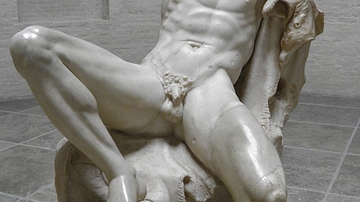
Image
Drunken Satyr
Marble statue known as the Barberini Faun or Drunken Satyr, copy by a Hellenistic sculptor of the Pergamene school of a bronze original, circa 220 BCE. (Glyptothek, Munich)
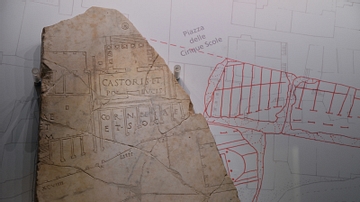
Image
Map of Rome fragment
Forma Urbis (marble plan of ancient Rome) from the Via Anicia, fragment depicting the late Republican Temple of Castor and Pollux in Circo Flaminio, 1st half of 2nd century CE (National Museum of Rome, Baths of Diocletian, Rome)
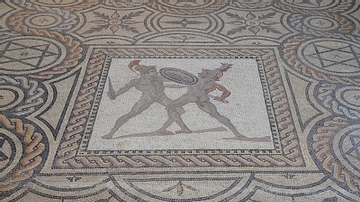
Image
Gladiator Mosaic, Reims
Mosaic pavement depicting two naked gladiators fighting. It was found in Reims (France) in 1890 and dates from the 2nd century CE.
Musée Saint-Rémi, Reims.
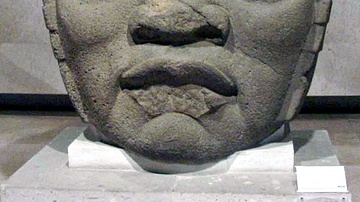
Image
Olmec Colossal Stone Head, San Lorenzo
An Olmec colossal stone head in basalt from San Lorenzo, c. 1200-400 BCE. Although all wear the hat or headdress worn during war and the Mesoamerican ballgame, each of these massive heads has unique features which suggests they depict specific...
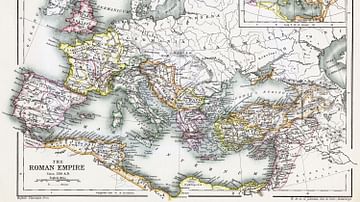
Image
Map of the Roman Empire, 350 CE
A map of the Roman Empire, circa 350 CE, showing its Dioceses, the administrative divisions of the late Roman Empire.
The diocese was introduced by emperor Diocletian to supplant the province as administrative unit of the empire.
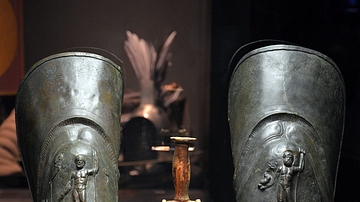
Image
Gladiator Dagger and Greaves
Gladiator's dagger and pair of bronze greaves (leg guards) from Pompeii, decorated with reliefs of Jupiter (left) and Neptune (right), 1st century BCE.
Archaeological Museum, Naples.
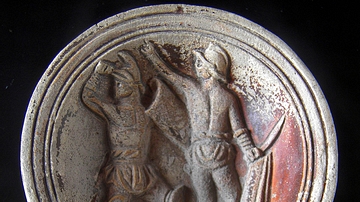
Image
Terracotta oil lamp with gladiators
Terracotta oil lamp depicting a gladiatorial scene of saluting or requesting missio (raising two fingers in surrender), first half of 1st century CE. (on display in the Colosseum, Rome)
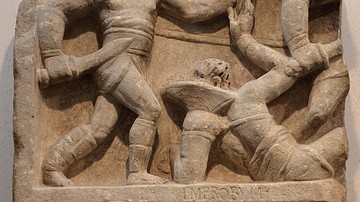
Image
Gladiator Relief
Fragment of a commemorative relief depicting a gladiator's victories, a contraretiarius against a retiarius called Improbus, 3rd century CE.
National Museum of Rome, Baths of Diocletian, Rome.
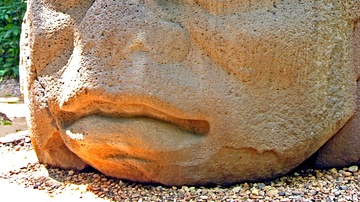
Image
Olmec Stone Head, La Venta
An Olmec colossal stone head in basalt from La Venta, c. 1200-400 BCE. Although all wear the hat or headdress worn during war and the Mesoamerican ballgame, each of these massive heads has unique features which suggests they depict specific...